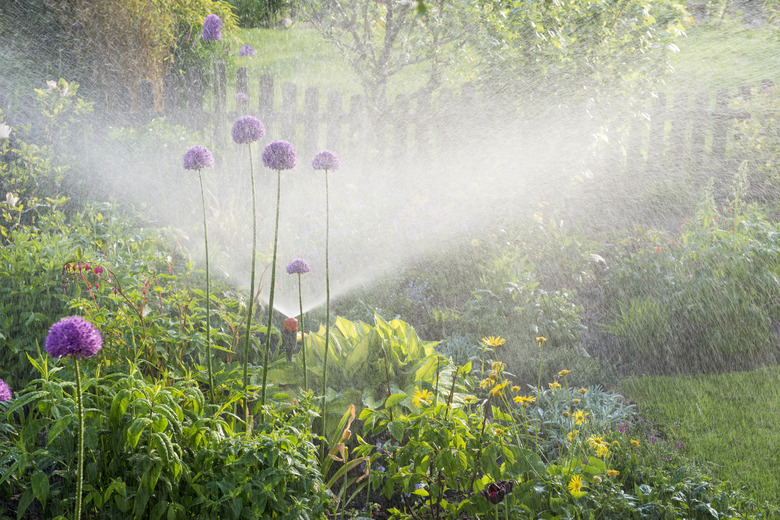How To Get Dirt Out Of Sprinkler Lines
We may receive a commission on purchases made from links.
Sprinkler lines are sealed, but even so, dirt can get in, so it's a good idea to periodically flush a sprinkler system. This isn't a difficult thing to do, but you should be methodical about it to make sure you don't leave any residual dirt or sand.
Sometimes, you don't need to flush the entire system but just a single zone or a single sprinkler that has gotten clogged. That's also easy to do, but when a sprinkler head gets clogged, dirt may be lodged inside, so it's a good idea to clean it after you've flushed the pipes.
Dirt and Sand in the Sprinkler System
Dirt and Sand in the Sprinkler System
How did dirt and sand get in the sprinkler system? That's a mystery you'll eventually have to solve, but somehow it did, and now you have to get it out. You'll know how extensive the problem is by how many sprinklers are affected and exhibiting low flow. If it's just one, you can flush that one and leave the rest for later.
The procedure is simply to unscrew affected sprinkler heads from the pipes, turn on the water, and let it flow freely until it runs clear. To unscrew a head, you have to be able to grasp it so you can turn it clockwise, which may require digging out the ground around it with a trowel. If you do this, make the hole wide enough to prevent dirt from falling into the pipe after you remove the head.
Flushing Zone by Zone
Flushing Zone by Zone
Most sprinkler systems have more than one zone, each controlled by a separate valve, and flushing out an entire zone should correct any flow problems sprinklers in the zone are experiencing. You don't have to remove all the sprinkler heads to do this, just the last one in the zone, and there's an easy way to find it.
Open the zone valve manually by turning the knob located on the top and watch the sprinklers. The one that takes the longest to begin spraying is the last one in the zone. Turn off the valve, remove that sprinkler head, turn the valve back on, and let water flow freely from the opening for the last head. You might be surprised at how dirty the water is, and it may take up to a minute for it to run clear. Once it does, turn off the valve and replace the head.
Physically Removing Dirt
Physically Removing Dirt
If a sprinkler head breaks or you remove one, dirt can fall directly into the pipe. You can get it out by flushing the pipe, but you may not have to go to the trouble if the area around the sprinkler is dry. You can suck dirt out with a wet/dry vacuum.
The opening on a standard vacuum hose is too large to get into the pipe, and there's an easy way to make it smaller. Purchase an inexpensive oil funnel from a car parts store and fit the wide end over the hose. You can insert the narrow end into 3/4- and 1/2-inch fittings easily, and the restricted airflow will magnify the suction. Once the dirt is out, screw the sprinkler head back onto the fitting immediately to prevent more dirt from falling in. If the fitting is broken, cover the hole with a rag until you can make repairs.
